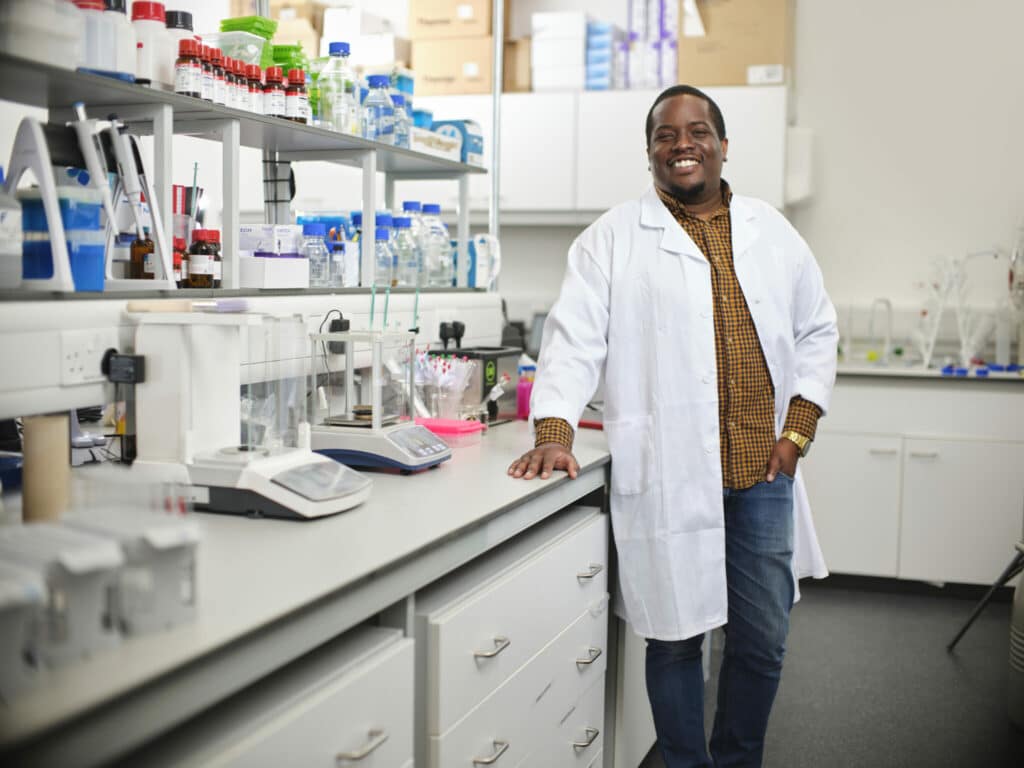Neciah Dorh is the CEO of FluoretiQ Limited, an award-winning startup set up in 2017 by himself, his co-founder and wife Josephine, and his PhD Supervisor Martin Cryan.
FluoretiQ exists, in Neciah’s own words, “to tackle the long-term healthcare challenge of how we detect and diagnose illnesses caused by bacterial infections”.
Before co-founding FluoretiQ, Neciah was a bio-sensor researcher at the University of Bristol where he spent his days looking at ways of tracking bacteria signals for a variety of applications.

When his daughter was born with a suspected infection, Neciah and Josephine had to watch helplessly as the doctors immediately put their newborn daughter on intravenous antibiotics and conduct an extensive series of invasive tests.
After a stressful three day wait, they discovered that their daughter didn’t need to go through this experience at all. This was the catalyst to found FluoretiQ: and create solutions that would allow doctors to diagnose you quickly and prescribe the right treatment, first time.
What is FluoretiQ and how does it work?
The problem FluoretiQ is trying to fix, explains Neciah, is that “the current best way to detect bacteria is too slow, and the fastest way to do it is too inaccurate for the people who need it most”.
So his team – including engineers, scientists and data analysts – set about creating new and improved ways of finding and treating dangerous bacteria. In 2019 they got significant investment to develop their solutions, consisting of two technology platforms.
The first of these is NANOPLEX, a 15-minute test that will diagnose the infection and answer the questions: Does this person need antibiotics? What’s causing the infection?
“NANOPLEX is a chemical Velcro that the bacteria recognises and attaches itself to, like it does to cells in your body” continues Neciah.
“We capture images of those attachments and use machine learning to tell us what bacteria is there, and how much of it is present – this is the information you need for diagnosis.”
The second step in the process is SCFI, which allows the doctor to know which antibiotic will work best.
“SCFI is a machine learning tool that looks at bacteria wiggling. Bacteria naturally moves when it’s alive, and by looking at the bacteria using this tool we can tell if it is alive or dead after exposure to antibiotics.”
Neciah Dorh, CEO, FlouretiQ
What next for FluoretiQ?
As the team comes to an end of their research and development phase, they are gearing up to launch their first product in 2024, and aim to begin shipment of units to customers during the second half of the year.
To prepare for this phase in the journey the team made the move from Science Creates in Bristol city centre to Future Space in 2023.
“This move made sense for us because we needed more lab space”, says Neciah “and we are at the stage now where we need to interact more externally”.
“The café hub is really useful for this because you can meet up with people from all over the University of the West of England and connect with people from the Health Tech Hub and Bristol Robotics Lab – we are working with both, and they have been invaluable to us.”
“Future Space has a good mix of new and mature start-ups so you can learn from those who are ahead of you on that growth journey, and support those who are nearer the beginning of their journey. We’re looking forward to becoming even more involved in the ecosystem here and meeting more businesses as the space is set to grow.”